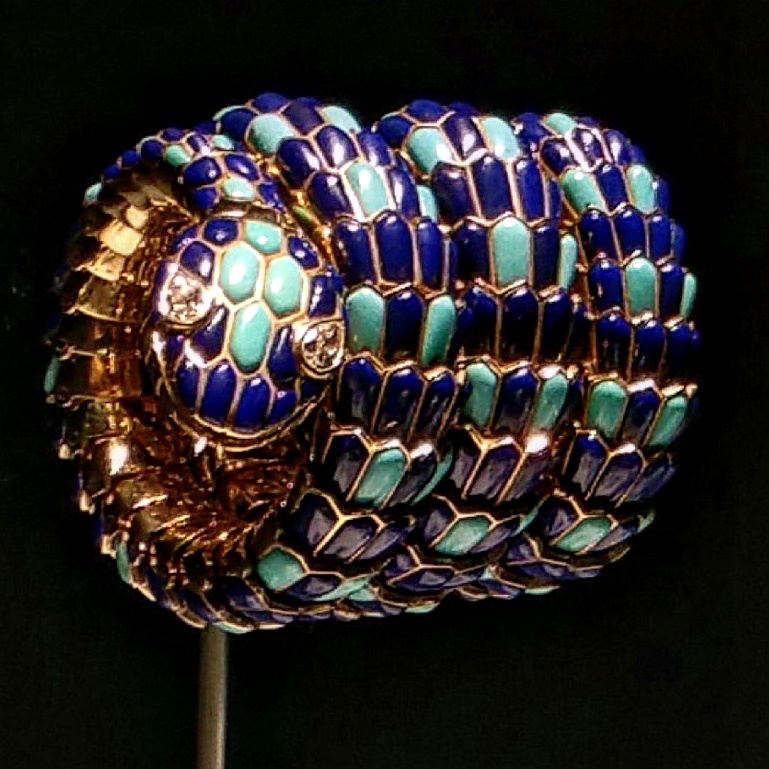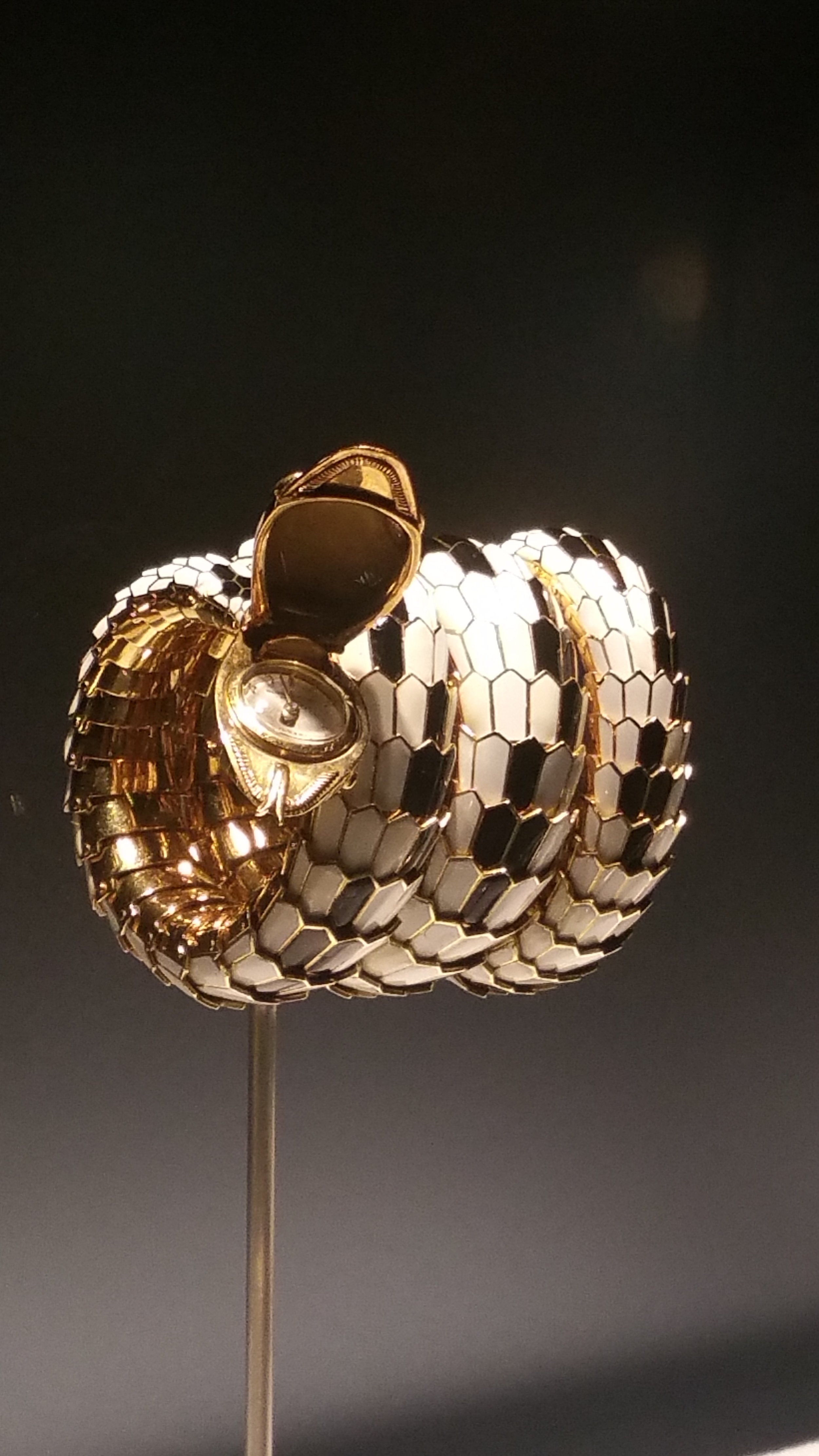The Subtle Evolution of the Bulgari Serpenti
A new exhibition at the ArtScience Museum primarily focuses on the representation of the serpent in art through the ages, with works on display by Keith Haring, Niki de Saint Phalle, and Heri Dono to name a few, but it is also an opportunity to get a better understanding of how Bulgari has slowly reinterpreted snakes over time and infused many of its creations with a serpentine twist, from watches and jewelry to accessories like handbags and perfume bottles.
Though organized by the jewelry house only one of the eight galleries of the exhibition titled, SerpentiForm, Snake through Art, Jewellery and Design, is actually dedicated to its bejeweled creations with Jean-Christophe Babin, Chief Executive of Bulgari, telling a press conference: “we prefer to glorify what is inspiring us.” Yet the more than 50 vintage watches and jewelry pieces in that gallery clearly demonstrate how the representation of the Bulgari serpent has subtly evolved.
While the first representation, created by Constantino and Mario Bulgari in 1948, was rather abstract (a supple tugobas bracelet-watch), Bulgari Brand and Heritage Curator Lucia Boscaini points out a more animalistic representation quickly emerged in 1950 in a secret watch designed as a snake with a large gold body and a very small head, which is featured in the exhibition.
But even this piece was a somewhat safe design. “That first more animalistic representation still didn’t have the scales, it was more of an extension of the Tugobas and it stayed like that until the end of the ‘50s with subtle reinterpretations mainly in the head,” Boscaini says.
The ‘Serpenti’ slithered into its golden age in the 1960s, and after Elizabeth Taylor was spotted wearing the snake bracelet-watch while shooting Cleopatra in Rome it quickly became an object of desire. By that time, the scales had started to appear on the design and Boscaini notes the pieces became extremely colorful with the use of enameling. The craftsmanship required for these pieces, with each scale needing to be separately enameled and fired several times before being assembled, has made them highly collectible at auction, even more so because Bulgari stopped creating a scaled Serpenti in the mid-1970s while still continuing the production of the Tugobas Serpenti.
Boscaini points out that the snake’s scales only reappeared relatively recently when the jeweler also introduced some different design, like ‘Head Over Tail’ (2015) with the snake bracelets formed so that the head is resting on the tip of its tail and ‘Serpenti Incantata’ (2016), where the snake wraps itself around the watch dial.



Epitomizing seduction but also inspiring fear, the snake has been viewed since ancient times, across Western and Eastern cultures, as a symbol of rebirth and protection inspiring artists in many fields through the ages. The exhibition thus starts with a few early examples — a statue from 2nd century CE of a young Hercules strangling the snakes, a Buddha protected by a Naga from the early 12th century, and Chinese statues of guardians — before moving on quickly through modern and contemporary art works by various Western and Asian artists: Joan Miró, Alexander Calder, Marc Chagall, Joana Vasconcelos, Motohiko Odani, Wu Jian’An, Kaneko Tomiyuki.








One gallery is dedicated to the representation of the snake form in costumes with items on from prestigious theater and cinema archives.
SerpentiForm will run at ArtScience Museum until October 15, 2017.






